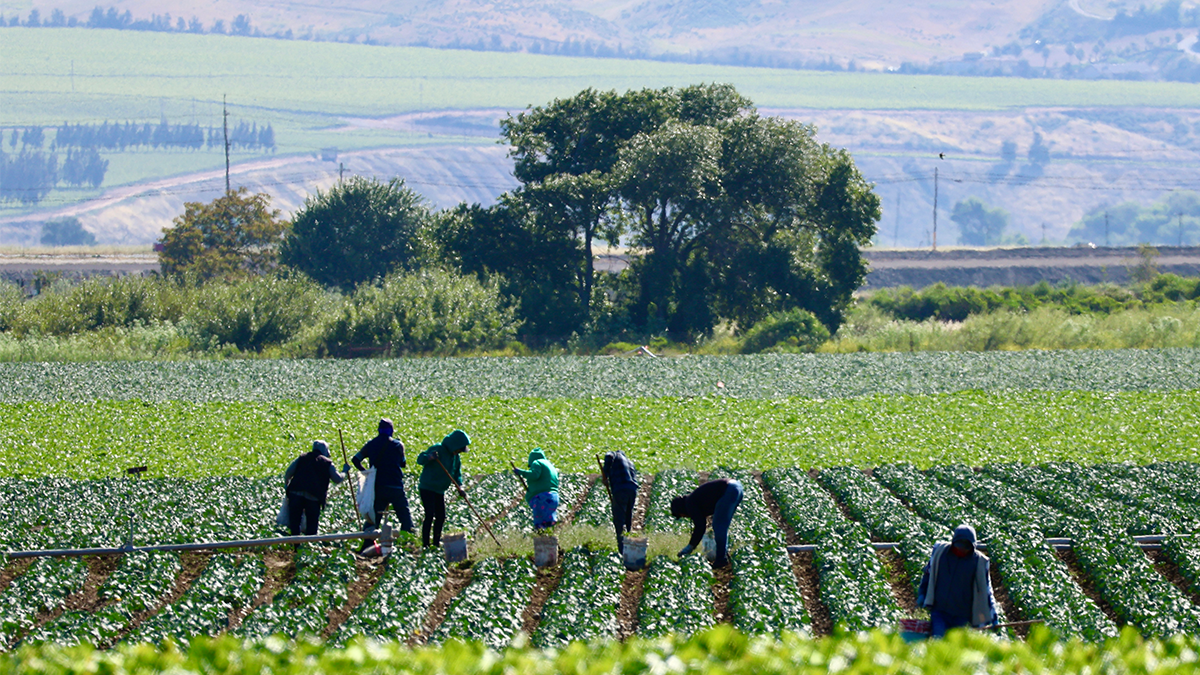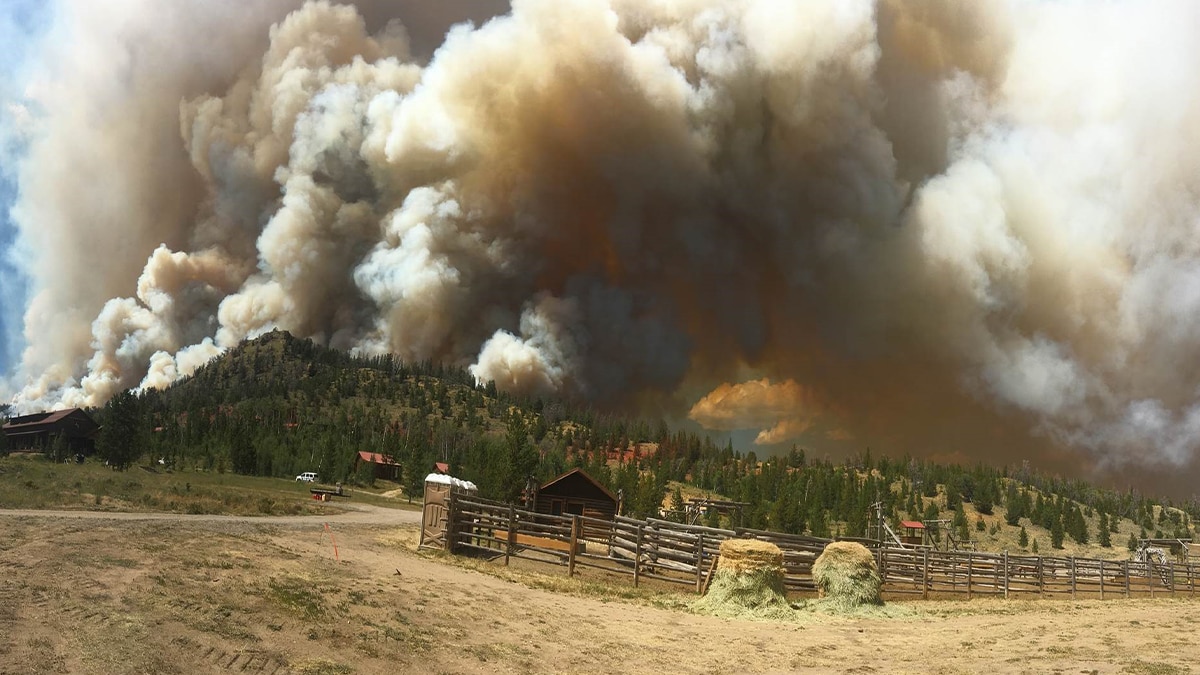At a glance
- Wildland fire smoke is known or suspected to cause various health effects. This is an area of ongoing research for NIOSH and our partners.
- Wildland fires include wildfires, prescribed fires (intentionally set fires for ecological benefit), and fires occurring in the wildland-urban interface (where wildland vegetation and urban areas meet).
- Working together, employers and workers can take steps to reduce workers’ exposures to wildland fire smoke.

What is wildland fire smoke?
Wildland fire smoke is a complex mixture of gases and particles from burning vegetation and other materials. As wildland fires burn, different compounds are released in the smoke, such as carbon monoxide, carbon dioxide, hydrocarbons, particulate matter (PM), benzene, acrolein, and aldehydes.

While exposure to wildland fire smoke has been of interest to researchers and public health professionals for decades, it continues to be one of the least understood hazards of wildland fires. This is primarily due to the complexity of wildland fire smoke, as the smoke is made up of many different types and amounts of potentially toxic compounds and can change very quickly depending on factors in the wildland fire environment, such as weather, fire behavior, and the type of vegetation burning. Because of this, workers may be exposed to varying types and amounts of compounds in wildland fire smoke throughout their work shift or during different fire events.
At-risk populations
The scientific community does not fully understand how long-term, repeated exposures to high concentrations of wildland fire smoke may affect a worker's health. Additionally, very little is known about how exposure to many different compounds at the same time, including compounds released from the burning of man-made materials (such as those found in the wildland-urban interface), may affect a worker's health. Employers should be aware that wildland fire smoke may adversely affect the health of their workforce and prepare to take action to limit their workers' exposures when a wildland fire is emitting smoke in and around their work environment.
There is clear potential for such exposures to result in adverse health outcomes based on studies examining exposure to smoke from wildland fires among the general public and assessments of the health effects of exposures to specific components of wildland fire smoke.
Symptoms and adverse health effects due to smoke exposure varies from person to person. Workers can have different individual risk factors such as age and health conditions (e.g., pre-existing heart or lung disease). Long work schedules and physical demands of the work performed (resulting in higher breathing rates) may also impact a worker's exposures and health response to wildland fire smoke. Some health effects known or suspected to be caused by wildland fire smoke include:
- Symptoms such as eye irritation, sore throat, wheeze, and cough,
- Asthma and chronic obstructive pulmonary disease (COPD) exacerbations,
- Bronchitis and pneumonia,
- Adverse birth outcomes, and
- Cardiovascular (heart and blood vessel) outcomes.
Reducing risk
Employers and workers should prepare for and plan to implement procedures to reduce exposures to smoke when necessary. If workers must work in areas with high levels of smoke, especially for long periods, or if a worker is sensitive to wildland fire smoke and feels their health or safety is negatively impacted by smoke exposure, the following steps can be implemented to reduce smoke exposure:
- Frequently monitor air quality conditions in the area by visiting the Environmental Protection Agency (EPA) US Fire and Smoke Map or the state health department's air quality website.
- Relocate or reschedule work tasks to smoke-free or less smoky areas or times of the day,
- Reduce levels of physical activity when possible, especially strenuous and heavy work,
- Require and encourage workers to take frequent breaks in places that are free from smoke, and
- Limit the worker's smoke exposure by making accommodations for that worker to perform his/her duties indoors or in a location that reduces exposure to smoke, if possible.
Reducing indoor smoke exposure
To reduce exposure to wildland fire smoke while working indoors, employers or building managers can:
- Install air cleaners equipped with a high-efficiency particulate air (HEPA) filter or electrostatic precipitators
- Ensure that windows and other building openings such as loading docks are kept closed to reduce overall smoke exposure inside
- Operate heating, ventilation, and air conditioning (HVAC) systems in the re-circulate setting or temporarily reduce the amount of outdoor air supplied to the building
- Install the highest efficiency filters recommended by the designer or manufacturer of the HVAC system.
Using personal protective equipment
Respirators, such as an N95®, may be one of the easiest, and in some cases the only, control to implement for limiting a worker's exposure to the particulate matter in wildland fire smoke. Employers may need to consider alternative controls and solutions when respirators are not easily available.
Controlling exposures to occupational hazards is the fundamental method of protecting workers. NIOSH recommends using the hierarchy of controls to determine how to implement feasible and effective workplace hazard control solutions. A NIOSH Approved® filtering facepiece respirator (FFR), like an N95® respirator, can be used to reduce exposure to airborne particulates from wildland fire.
If an employer requires their employees to use respiratory protection to limit smoke exposure in an occupational setting, they must always do it as part of a comprehensive respiratory protection program as required under the Occupational Safety and Health Administration's (OSHA) Respiratory Protection standard (29 CFR 1910.134). When respirators are used on a voluntary basis in an occupational setting, employers should follow the OSHA requirements for the voluntary use of respirators.
Things to remember about respirators
- Filtering facepiece respirators (FFRs) do not protect against gases, such as carbon monoxide.
- Tight-fitting respirators cannot be used by people with facial hair that interferes with the face seal.
- Wearing a respirator, especially if it is hot or you are physically active, can increase the risk of heat-related illness. Take breaks often and drink water.
What are states doing?
California and Oregon OSHA and the Washington State Department of Labor and Industries have adopted permanent rules to regulate on-the-job wildland fire smoke exposure.
Resources
NIOSH
- Agriculture, Forestry and Fishing Program
- Construction Safety and Health
- NIOSH Science Blog: Non-occupational Uses of Respiratory Protection – What Public Health Organizations and Users Need to Know
- NIOSH Science Blog: Protecting Workers and the Public from Wildfire Smoke
- Health Hazard Evaluation, Evaluation of Fire Debris Cleanup Employees' Exposure to Silica, Asbestos, Metals, and Polyaromatic Hydrocarbon
- Hazards During Cleanup Following Wildland Fires
- NIOSH Approved® Filtering Facepiece Respirators
Resources from Other Agencies
National Institute for Environmental Health Sciences
- Wildfire Worker Training Program
- Worker Health and Safety: Protecting Yourself during Wildfire Cleanup Fact Sheet
- Protecting Yourself While Responding to Wildfires: Safety and Health Awareness for Responders to Wildfires
